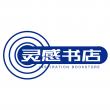
中国税式支出最优识别标准的发现和应用(英文版)/中国经济发展系列/中南财经政法大学双一流建设文库
正版保障 假一赔十 可开发票
¥ 44 6.3折 ¥ 70 全新
仅1件
广东广州
认证卖家担保交易快速发货售后保障
作者郭月梅
出版社中国财政经济出版社
ISBN9787509595053
出版时间2020-09
装帧平装
开本其他
定价70元
货号9909801
上书时间2025-01-06
- 最新上架
商品详情
- 品相描述:全新
- 商品描述
-
作者简介
郭月梅,澳大利亚莫纳什大学税法博士,中南财经政法大学财政税务学院教授,博士生导师,高级会计师,澳大利亚注册会计师。武汉市武昌区人大常委、财经委委员,兼任中国财政学会理事、澳大利亚税收协会理事、湖北省财政学会理事等。主要研究领域为财税、财会理论与政策、国际税收等。先后主持了国家自然科学基金、教育部人文社科基金、财政部部省共建课题、湖北省社科基金、湖北省软科学、湖北省教育厅教学研究、人文社科等40多项课题,并作为中方主持入主持了澳大利亚研究委员会(ARC)国际合作课题《削减中澳贸易和投资的税收障碍》。先后在《管理世界》《财贸经济》《经济管理》《财政研究》《税务研究》《美国税收评论》《澳大利亚税收论坛》等期刊发表论文50余篇。论文多次获得湖北省人民政府、武汉市人民政府等奖励。
目录
Chapter 1 Introduction
1.1 Background and Motivation
1.2 Research Questions
1.3 Theoretical, Conceptual Framework & Analytical Techniques
1.4 The Structure and Main Body of the Book
1.5 Sources of the Tax Law, Period and Translation
1.6 The Source and Relative of the Accounting Standards
Chapter 2 A Short History of Tax Expenditure Research in China
2.1 Introduction
2.2 Early Stage: 1979-1993
2.3 A Period of Theoretical Development: 1993-1999
2.4 A Period of Administrative Development: 2000-2008
2.5 Retreat from Tax Expenditure Analysis: 2009 to date
2.6 Conclusion
Chapter 3 The Development of Chinese Enterprise Income Tax
3.1 Introduction
3.2 Income Tax Exemption for SOEs
3.3 The First Stage: 1980s
3.4 The Second Stage: Two Income Tax Systems
3.5 The Third Stage: Unification of Enterprise Income Tax Law
3.6 Conclusion
Chapter 4 The Evolution of Accounting Standards in Modern China
4.1 Introduction
4.2 The Socialist Years of Central Control and the Planned Economy: 1949-1978
4.3 The Open Door Policy Period, 1978-1992
4.4 The "Socialist Market Economy" Period, 1992-2005
4.5 Convergence with International Standards, 2006
Chapter 5 Tax Expenditures Concept and the Importance of the "Benchmark"
5.1 Introduction
5.2 Origins of Tax Expenditure Analysis
5.3 The Development of Tax Expenditures Reports
5.4 Establishing the Benchmark to Identify of Tax Expenditures
5.5 Key Features of a Tax Benchmark
5.6 Experiences of Tax Expenditure Benchmarks
Chapter 6 Benchmark War and the Case for Using Accounting Standards as the Benchmark
6.1 Introduction
6.2 Forty-six YearsDebate over Tax Expenditures Baseline: Benchmark War
6.3 Analysis of the 46 years Benchmark War
6.4 Other Reasons for Chinas Choice: Accounting Standards as Tax Expenditures
6.5 Conclusion
Chapter 7 Tax Expenditures Identified Using Accounting Standards as the Benchmark
7.1 Introduction
7.2 State Encouraged Industries
7.3 State Encouraged Projects
7.4 Protect Disadvantage Groups
7.5 Special Areas
7.6 Encouraged Technology Innovation and Improvement
7.7 Interest Income to Subsidise Borrowing Costs for Two Types of Debtors
7.8 Dividend Income and other Distributions
7.9 Non-Profit Organizations
7.10 Transitional Concession
7.11 Conclusion
Chapter 8 Conclusion
8.1 Summary of the Whole Book
8.2 Policy Implication
8.3 Research Limitations
8.4 Future Research
Bibliography
内容摘要
本书综合运用应用经济学、公共管理学、社会学、法学和政治学等多学科理论,以党中央和国务院结合世情、国情所确立的以减税降费服务于经济高质量发展为重心的公共财政顶层设计为中心,从税式支出政策与财政、税收治理理念入手,基于中国税式支出很优识别标准的发现和应用,围绕税式支出政策进行全面的学理探索、理论分析及整体效果的科学评估,将税式支出政策与税收制度建设有机地结合起来,形成税负合理的现代税收制度。具有重要的理论意义与学术价值。
精彩内容
本书综合运用应用经济学、公共管理学、社会学、法学和政治学等多学科理论,以党中央和国务院结合世情、国情所确立的以减税降费服务于经济高质量发展为重心的公共财政顶层设计为中心,从税式支出政策与财政、税收治理理念入手,基于中国税式支出最优识别标准的发现和应用,围绕税式支出政策进行全面的学理探索、理论分析及整体效果的科学评估,将税式支出政策与税收制度建设有机地结合起来,形成税负合理的现代税收制度。具有重要的理论意义与学术价值。
— 没有更多了 —












以下为对购买帮助不大的评价